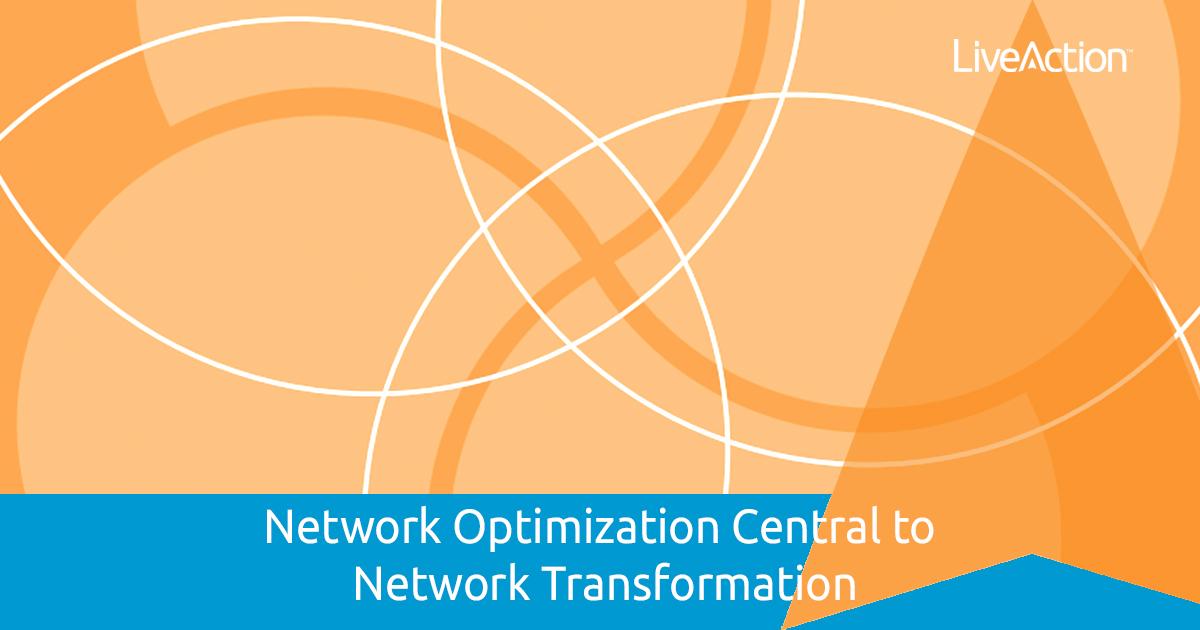
Top Network Trends Impacting Network Operations Teams in Enterprise-Level Organizations
Research Background
In March of 2019, Sirkin Research was commissioned by LiveAction to examine the importance of network optimization and other driving forces transforming the rapidly evolving network environment in enterprise-level companies. It is well recognized that network transformations such as SD-WAN, WiFi, and multi-cloud, edge computing among other trends, are creating a host of new challenges and opportunities for network operations and raising the importance of network optimization across all network domains. This research is based on responses from over 160 network and IT professionals in predominantly large mid-market and enterprise-level organizations with at least $1 billion in revenue.
About Sirkin Research
Sirkin Research is focused on conducting primary research and delivering rich data insights to guide better decision-making for businesses. Located in Philadelphia, PA, USA, Sirkin research has over 15 years of experience working for some of the largest global technology and financial brands in the world. The firm’s work spans the globe from Copenhagen to London to New York. Sirkin Research has recently re-branded as Arras Consulting, https://www.arrasconsulting.com.
About LiveAction Research
LiveAction is the #1 enterprise network optimization and performance management platform, providing network professionals the situational insights needed to easily manage and control end-to-end performance of multi-domain, multi-vendor, and multi-cloud environments. LiveAction empowers network professionals to proactively identify, troubleshoot and resolve issues across vast hybrid environments, and to become more efficient by simplifying the management of cumbersome workflows. To learn more and see why LiveAction delivers the best network performance management and diagnostic (NPMD) solution for your organization.
2019 Top Network Transformation Projects PDF
Research Insights: Network Optimization is Central to the Success of all Network Initiatives
The strategic business objective of “doing more with less” is driving the transformation of enterprise networks. These transformations create new and unforeseen challenges for network management teams, especially when it comes to network optimization across all network domains. Teams that rely on legacy monitoring tools that only “see” a slice of the network are often crippled by a lack of holistic visibility across the entire network. The research highlights how business goals are driving network transformation projects. However, legacy network monitoring tools have not kept up with changing times, raising the importance of improve network optimization and performance across the entire network.
Network Transformation Cycle
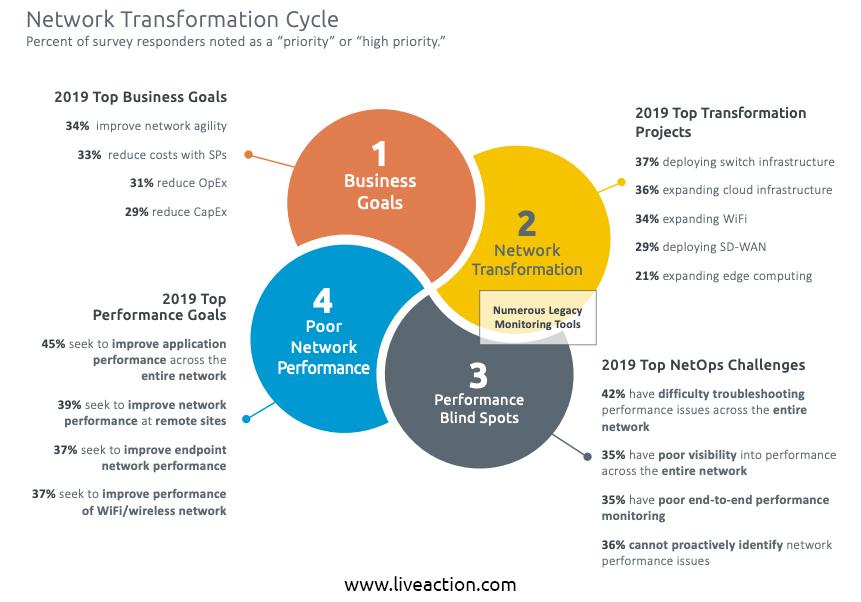
Business Objectives Drive Network Enhancements
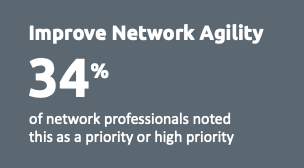
As enterprises become more and more reliant on their networks for growth and operational efficiency, strategic IT decisions about the network are, in fact, strategic business decisions.
The goals of increasing network flexibility and agility, while at the same time reducing costs and doing more with less, have long been general enterprise objectives.
These objectives are now ensconced firmly in the Network/IT Operations units of large enterprises, as confirmed by NetOps professionals where 34% of survey participants noted improving network agility as their highest priority goal for 2019. Those same participants also ranked lowering service provider costs, Capex budget, and Opex budgets as their next most important goals for 2019.
Table: 2019 Top Business Goals for Network Operations Survey Results

Network Optimization Projects Key to Achieving Both Agility and Cost Savings

The highest priority projects for 2019 are those that transform networks away from legacy architectures in order to become more agile and less costly.
Cloud-oriented projects allow organizations to offload infrastructure and maintenance costs to providers while at the same time enabling the ability to host, scale, and spin up applications and services when and where they are needed. At the same time, SD-WAN deployments allow organizations to reduce their overall WAN costs while speeding up provisioning and deployment for branch offices.
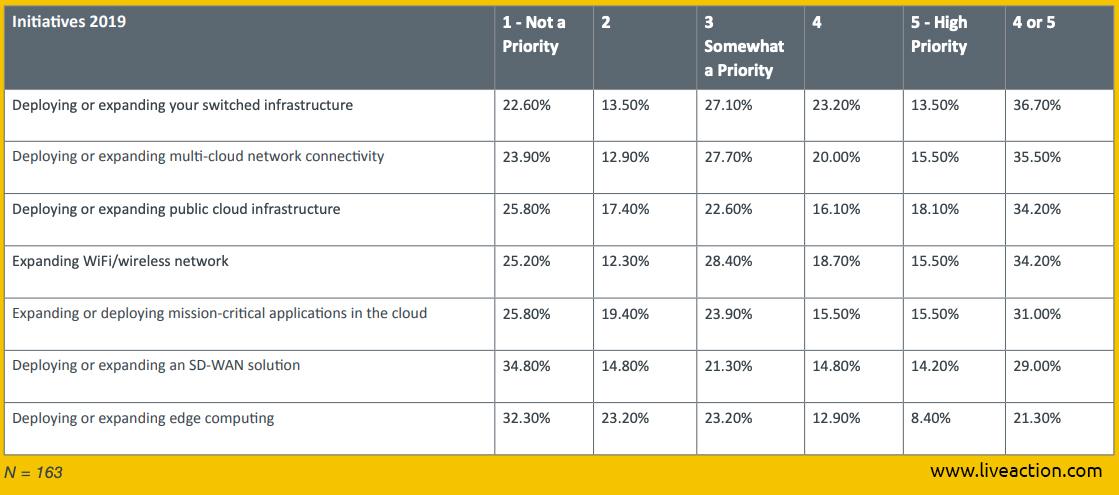
Table: 2019 Top Network Enhancement Projects Survey Results
 Network transformation
Network transformation
projects are not, however, executed in a vacuum. They occur in an environment of disparate legacy networks, some decades old, others only recently installed and stabilized. Each legacy network typically has its own toolset for monitoring and management, some very capable, others highly limited. Many often exist as silos, with limited visibility and poor interoperability outside its own infrastructure. These siloed systems present more than a few challenges, oftentimes leaving network operations teams blind to new and old problems.
Network Performance Blind Spots Handicap Network Optimization
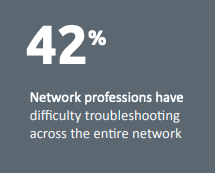
Network operations professionals face numerous challenges when trying to deliver on strategic initiatives, the largest of which is simply a lack of time as cited by almost 43% of survey respondents in the 2019 Top Network Challenges Survey.
In fact, almost as many (42%) struggle with troubleshooting issues across the whole network as a result of disparate legacy architectures. Network professionals are challenged to find network performance issues that span several network domains (38%) and are hampered by poor performance visibility across multiple network fabrics (35%). These network performance blind spots contribute to the inability to optimization network performance quality, which in turn hampers the successful delivery of network transformation initiatives.
Network Optimization and Performance Improvements Dominate 2019 Goals
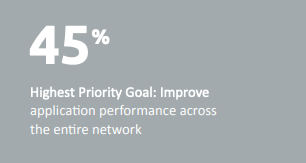
Poor network performance negatively impacts business performance. NetOps pros clearly recognize this relationship and are focusing their efforts on this reality. Over 45% seek to improve application performance across the entire network; almost 40% seek to improve remote site network performance, and 37% respectively seek to improve WiFi/wireless performance.
Table: 2019 Top Network Goals Survey Result
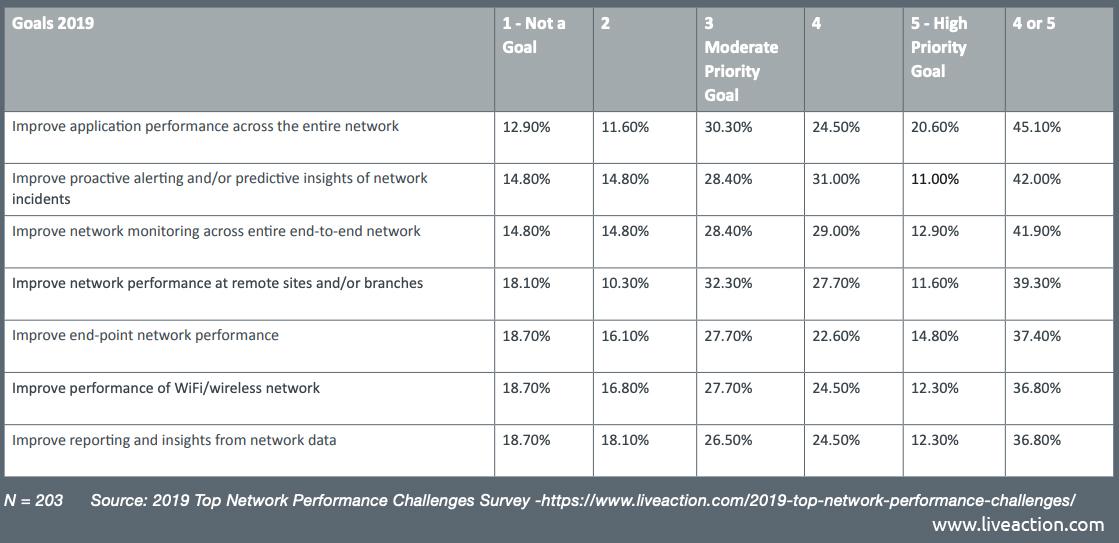
Network Optimization and Networkwide Visibility Lead Major 2019 Initiatives
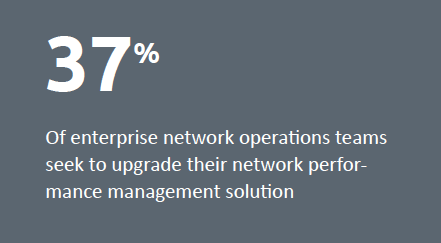
Resolving network performance issues starts by gaining visibility and insight into what and where issues are occurring. The need to eliminate these network performance blind spots through end-to-end network visibility and optimize is one of the key network operations initiatives for 2019.
In fact, 39% of NetOps pros are addressing this need by consolidating legacy network monitoring tools while 37% seek better network performance management solutions and another 34% seek to automate or upgrade network configuration change management tools.
Table: 2019 Top Network Performance Improvement Initiatives




